MICROBIO EXAM 2
1/157
There's no tags or description
Looks like no tags are added yet.
Name | Mastery | Learn | Test | Matching | Spaced |
|---|
No study sessions yet.
158 Terms
viruses most basic form
have a genome, a protective layer, and a way to get into the cell.
external virus structure
Spikes
boundary structures(capsid)
icosahedral and helical
caspids
protect the genome
envelope
another layer of protection and helps the virus evade the immune system(stolen form host cell plasma membrane)
2 types of boundaries
naked and enveloped
virus nucleic acids
RNA or DNA, negative or positive sense RNA
internal substances(not the nucleic acids)
RNA dependent RNA polymerase(RDRP) and Reverse transcriptase- RNA to DNA
Viral multiplication (viral “life” cycle)
attachment
entry
replication
assemble
release
attachment
viral spikes determine the host range
2 types of viral entry
endocytosis(virus is engulfed)
Fusion(virus envelope fuses)
what do viruses need to do for replication and production
make the nucleic acid(genome)
make the viral proteins(capsomeres etc.)
where do DNA viruses do replication and production
Nucleus
Where do RNA viruses do replication and production
cytoplasm
what type of RNA genomes are ready for translation
positive sense ssRNA Genomes because they are already in the correct orientation for ribosomes to translate
what do +sense RNA have to do to replicate and produce
has to make a copy of its genome
what do you have to do to make a copy of RNA
make the other sense (ex to copy +RNA you need to make -RNA and then form that make +RNA)
why do +RNA not need RDRP
because they can immediately make protein they make RDRP in the cell so they dont need to bring it in with them
what does -RNA have to bring with it into the cell
RDRP(RNA-dependent RNA polymerase)
What do retroviruses need to bring with them into the cell
RT(reverse transcriptase)
3 main ways viruses leave
lyse
exocytosis
bud(specific to envelope viruses)
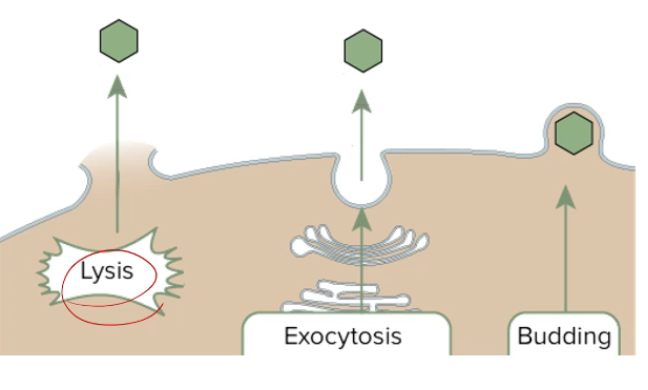
the host in infected, virus is cleared
Acute infection
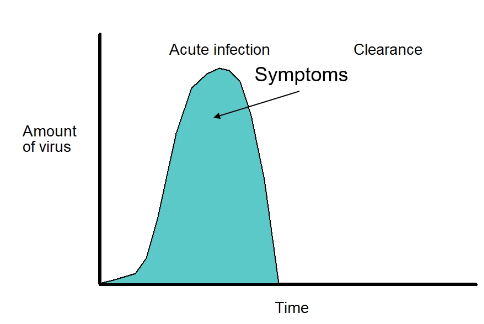
the host in infected, but the virus is not cleared
Persistent(chronic) infection
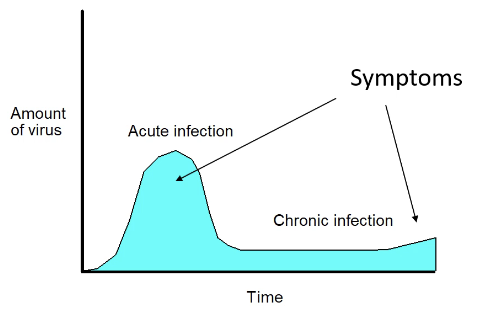
genome
the sum of total genetic material in an organism (RNA or DNA)
virus protective layer
capsid(ex. icosahedral, helical)
envelope(only applies to some) is stolen form the plasma membrane of host cell
Spikes on virus
Determine what cells a virus can infect
host is infected and is mostly clear but remains
latent infection
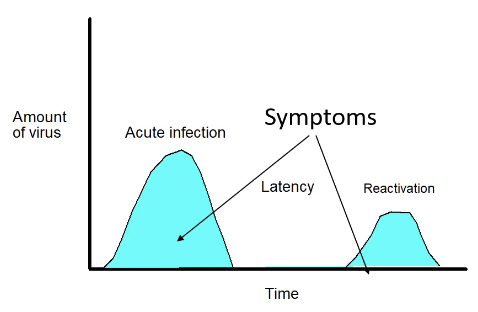
the virus “immortalizes” cells
Cancer from viral infection
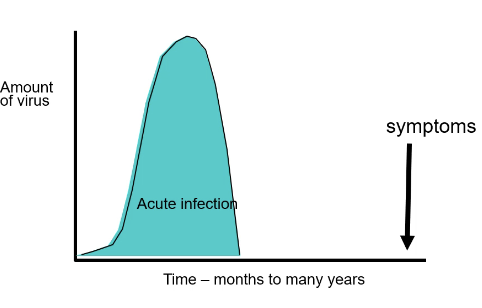
why are viruses tricky to study in lab
they require living cells
what is a prion
misfolded proteins but they can accumulate in the brain and cause serious diesease in humans and animals
prions 3 things
extremely difficult to get rid of in the environment
transmissible
always fatal
prion transmission
once the misfolded protein is in the body, all of the normally folded proteins will fold incorrectly
informational packets that code for a specific protein or RNA molecule
gene
structural genes
code for proteins
regulatory genes
control gene expression
genotype
an organism’s distinctive genetic makeup
phenotype
the expression of the genotype, as defined by traits
DNA bases
A, C, G, and T that make up the genetic code.
DNA read and written
read 3 to 5 written 5 to 3
RDRP has low fidelity(bad at catching its mistakes)
high mutation rates
DNA replication
DNA to DNA
Transcription
DNA to RNA
initiation
RNA polymerase binds to the “template strand” at recognized sites called promoters
Elongation
RNA polymerase builds a complimentary RNA strand in a 5 to 3 orientation using U(uracil) instead of T (thymine)
Termination
RNA polymerase recognizes a stop sequence and releases the mRNA strand
RNA bases
A, C, G, U
3 types of RNA
mRNA, rRNA, tRNA
Translation
mRNA to protein
how many amino acids are there
20
Polyribosomal complex in bacteria
to speed up protein synthesis in bacterial cells, translation of mRNA begins while transcription is still occuring
retroviruses use the reverse transcriptase (RT) to…
make DNA from their RNA genomes
viral genomes(2)
segmented vs non-segmented
what can viruses do with their genes to control how the ribosome reads it
Splicing and stuttering
operon
multiple genes in a row and they are all regulated together
inducing and operon
turn on
repressing and operon
turn off
catabolic operon
presence of the substrate induces the operons expression
anabolic operon
they are usually “on” but can be repressed for certain circumstances
the lactose operon
catabolic- present in E. coli and its expression allows the bacteria to use lactose as a nutrient via fermentatation
3 components of lac operon
regulator
control locus
Structural locus
Phase variation
when bacteria turn off genes that lead to obvious phenotypic types
strains with phase variation….
are more likely to be pathogenic
DNA recombination(since they dont sexually reproduce)
a dinor bacterial cell transfers DNA to a recipient cell (Usually in the form of plasmids)
plasmid
non-essential DNA (can carry genes for antibacterial resistance)
bacteria must have a direct connection (pilus) to transfer genetic material
Conjugation
have genes for resisting antibiotics
Resistance(R) plasmids
a cell nonspecifically accepts small fragments of soluble DNA
Transformation
viruses pick up DNA from donor cells during viral assembly and release it during viral entry of recipient cell
Transduction
can move DNA within an organism(within 1 cell)
Transposons
changes to nucleotide sequence
Mutation
spontaneous mutation
errors in replication
Induced mutations
exposure to knows mutagens (ex. UV rays)
point mutation
addition, deletion, or substitution of single bases
Missense mutation
different amino acid
Nonsense mutation
changes to a stop codon
silent mutation
changes nucleotide sequence but does not change the amino acid
Frameshift mutation
deletion or insertion of one or more base pairs which shifts the reading frame of the mRNA
why don’t cells figure out a way to stop mutations completely
mutations give microbes variation which is helpful for adaptation
altering genes to introduce new traits
Genetic engineering
Cut DNA at sites with a particular nucleotide sequence
restriction endonucleases
Works by making many copies of of genes present in a sample
Polymerase Chain reaction (PCR)
So sensitive that you dont need to culture microbes to detect them
Polymerase chain reaction (PCR)
DNA is negatively charged
Pulsed field gel electrophoresis (PFGE)
Restriction endonucleases cut the whole genome at certain sites
Pulsed field gel electrophoresis (PFGE)
each organism will have different lengths of DNA pieces
Pulsed field gel electrophoresis (PFGE)
Organisms with similar banding patterns are from the same “source”
Pulsed field gel electrophoresis (PFGE)
Nucleotide sequence is determined
DNA sequencing
By adding foreign DNA we can make cells do “foreign” things
Recombinant DNA technology
Goal: replace defective genes with working copies
Gene therapy
2 types of gene therapy
Gene addition + Gene editing
Non mutated genes are added to the cell with a mutated genome
Gene addition
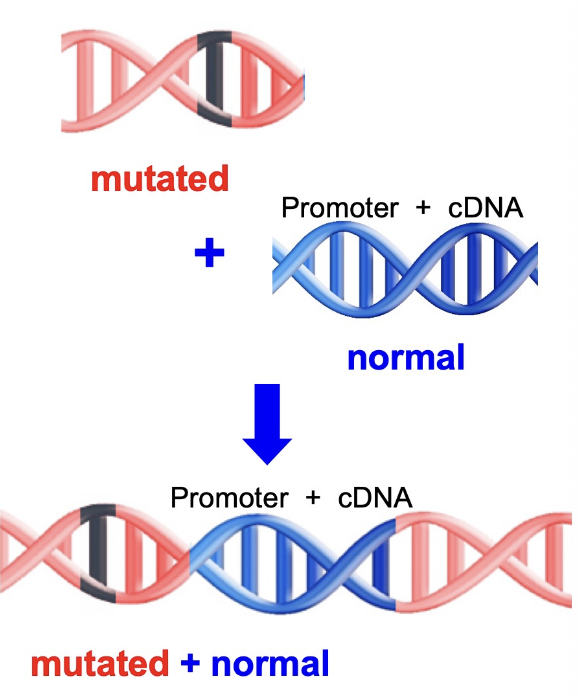
The mutated gene is corrected in place (use CRISPR)
Gene editing
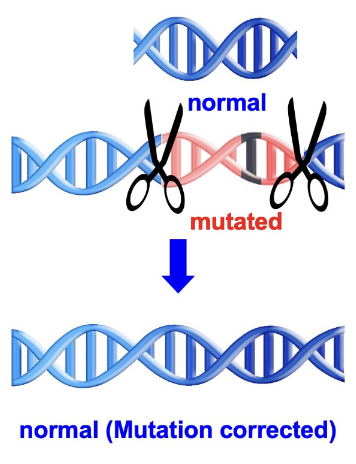
how do we deliver genes
viral vector
why do we use viruses to deliver genes
viruses can get to hard to reach areas but are specific for cell types
How do we diagnose infectious disease
Clinical microbiology
3 steps of clinical microbiology
determine if there is a pathogen present
identify
characterize
one of the most important steps towards identification
Specimen collection
3 types of methods(assays) for identification
phenotypic
genotypic
immunologic
microscopic, macroscopic, Physiological/biochemical
Phenotypic
catalase test
Phenotypic